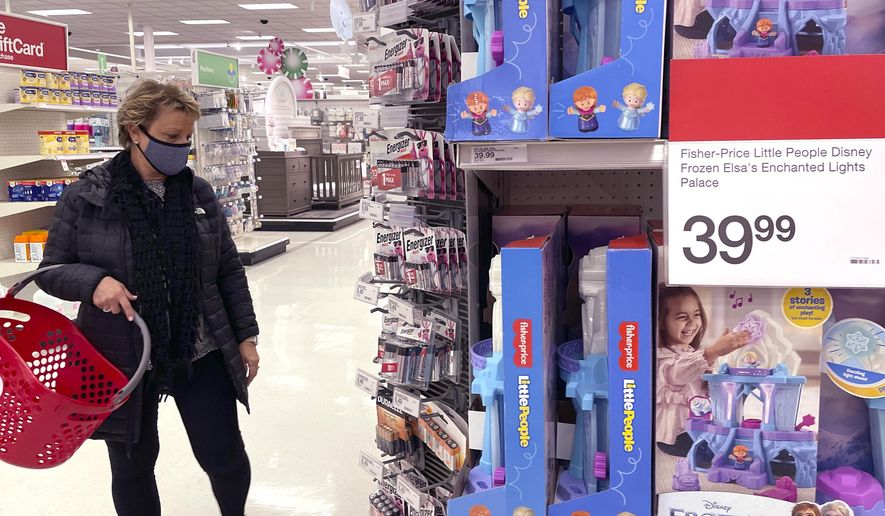WASHINGTON — U.S. consumer confidence rose this month as Americans shrugged off concerns about rising prices and COVID’-19’s highly contagious omicron variant.
The Conference Board, a business research group, said Wednesday that its consumer confidence index - which takes into account consumers’ assessment of current conditions and their outlook for the future - rose to 115.8 in December, the highest reading since July. In November, it registered 111.9.
Consumers’ view of current conditions dipped slightly, but their outlook for the next six months brightened.
Their expectations for inflation actually dropped this month - perhaps because gasoline prices have fallen in recent weeks - even though the government reported that prices rose in November at the fastest year-over-year rate since 1982.
“Despite high inflation and the rising Omicron wave, consumers are bullish on 2022,’’ said Robert Frick, economist with Navy Federal Credit Union. “This reflects growing economic momentum, as job openings remain high and prices are dropping at the pump. This is further evidence that consumer spending will keep rising and be the main factor fueling the expansion.”
It was the first reading taken since COVID-19’s omicron variant started spreading rapidly around the world, threatening the unexpectedly strong economic recovery from last year’s coronavirus recession.
“Looking ahead to 2022, both confidence and consumer spending will continue to face headwinds from rising prices and an expected winter surge of the pandemic,’’ said Lynn Franco, the Conference Board’s senior director of economic indicators.
The Commerce Department reported last week that U.S. consumers slowed their spending from October to November - but kept shopping ahead of the holiday season despite rising prices and widespread shortages. However, the November retail sales report did not capture any impact from omicron, which emerged in late November.
On Wednesday, President Joe Biden convened a meeting of his supply chain disruptions task force virtually and in-person in Washington, where he touted what he said was significant progress in alleviating bottlenecks at the ports and other issues that had created shortages of goods and contributed to higher prices for consumers.
Biden said that retail inventories are up 3% from last year and on-shelf availability for products is at 91%, close to where it was before the pandemic.
“Packages are moving. Gifts are being delivered. Shelves are not empty,” Biden said.
Retail data released last week by the Commerce Department appears to back that up with further evidence that Americans are spending despite rising prices.
_____
AP writer Alexandra Jaffe contributed.




Please read our comment policy before commenting.